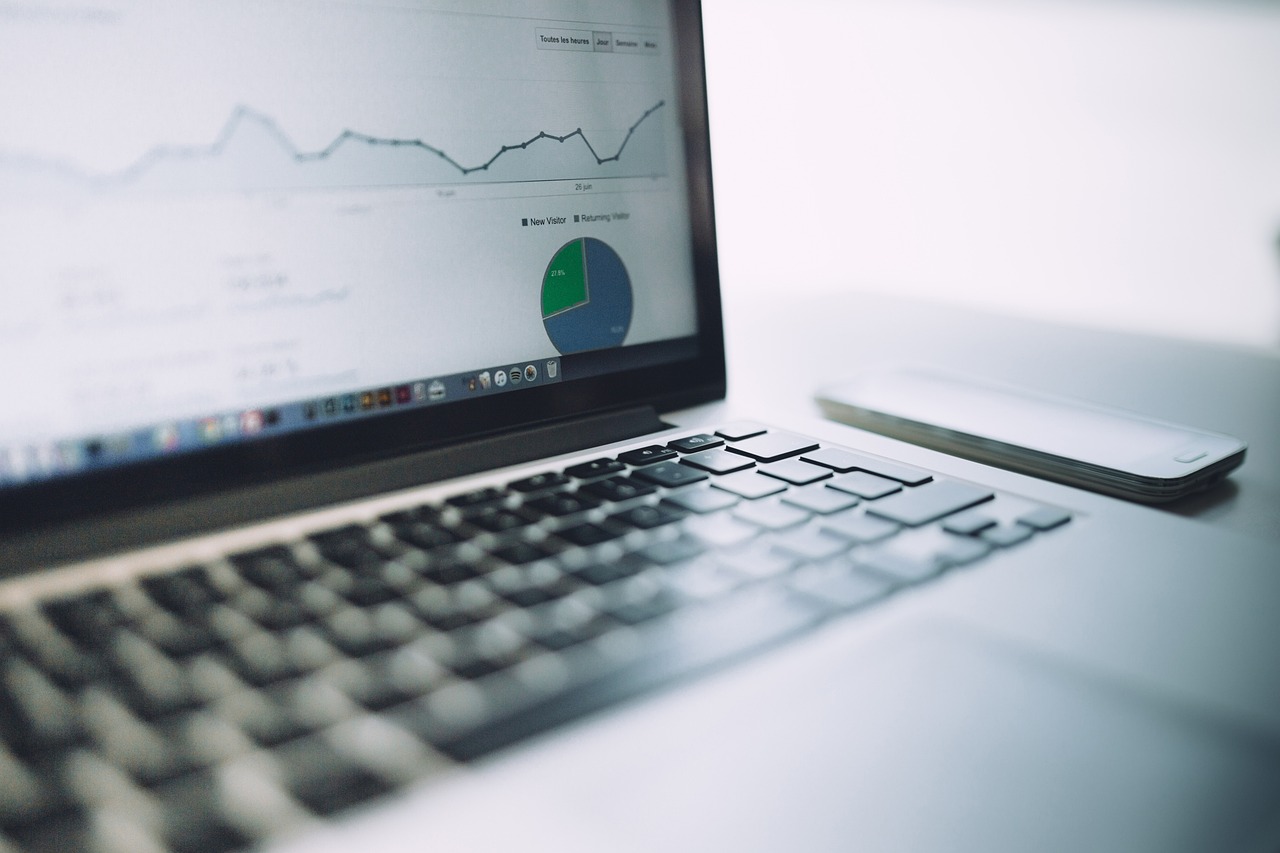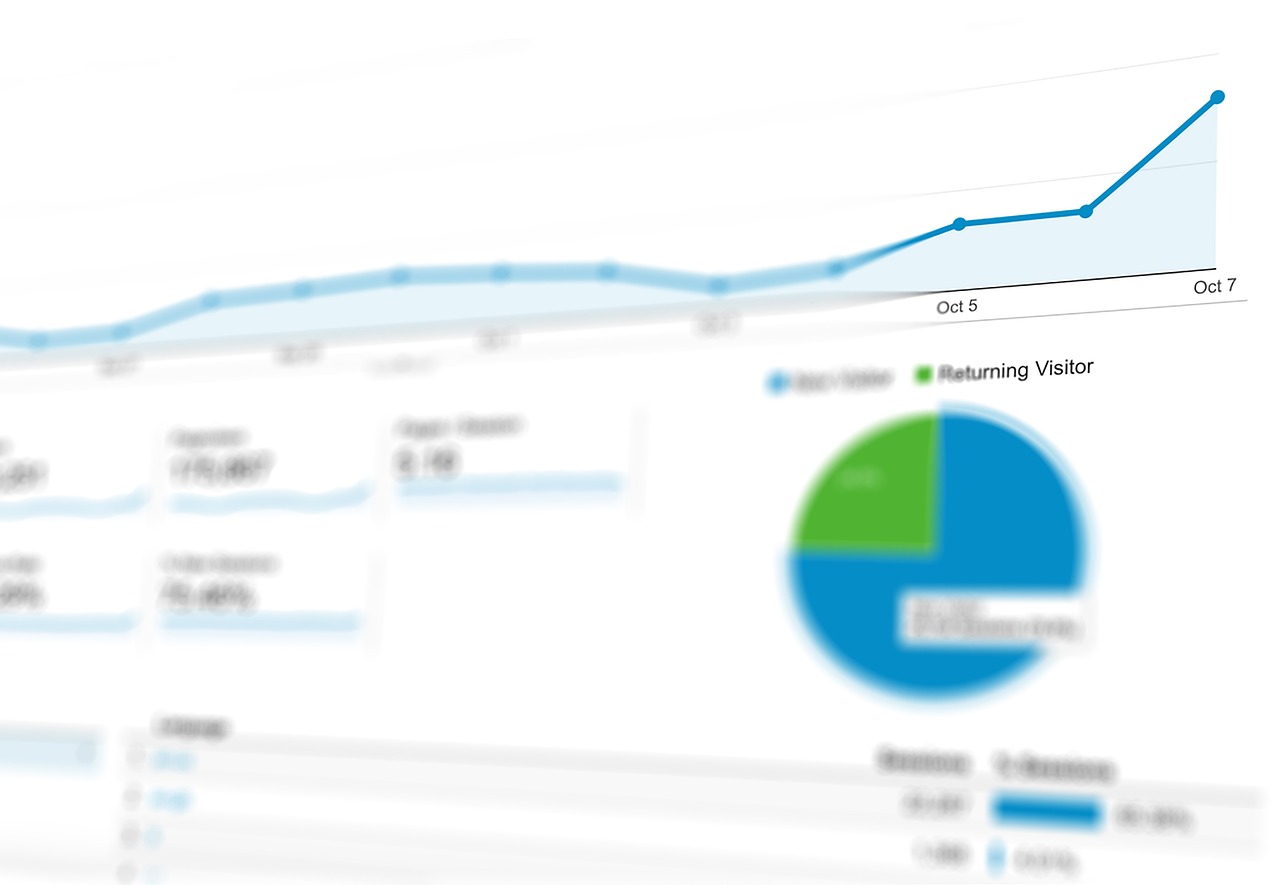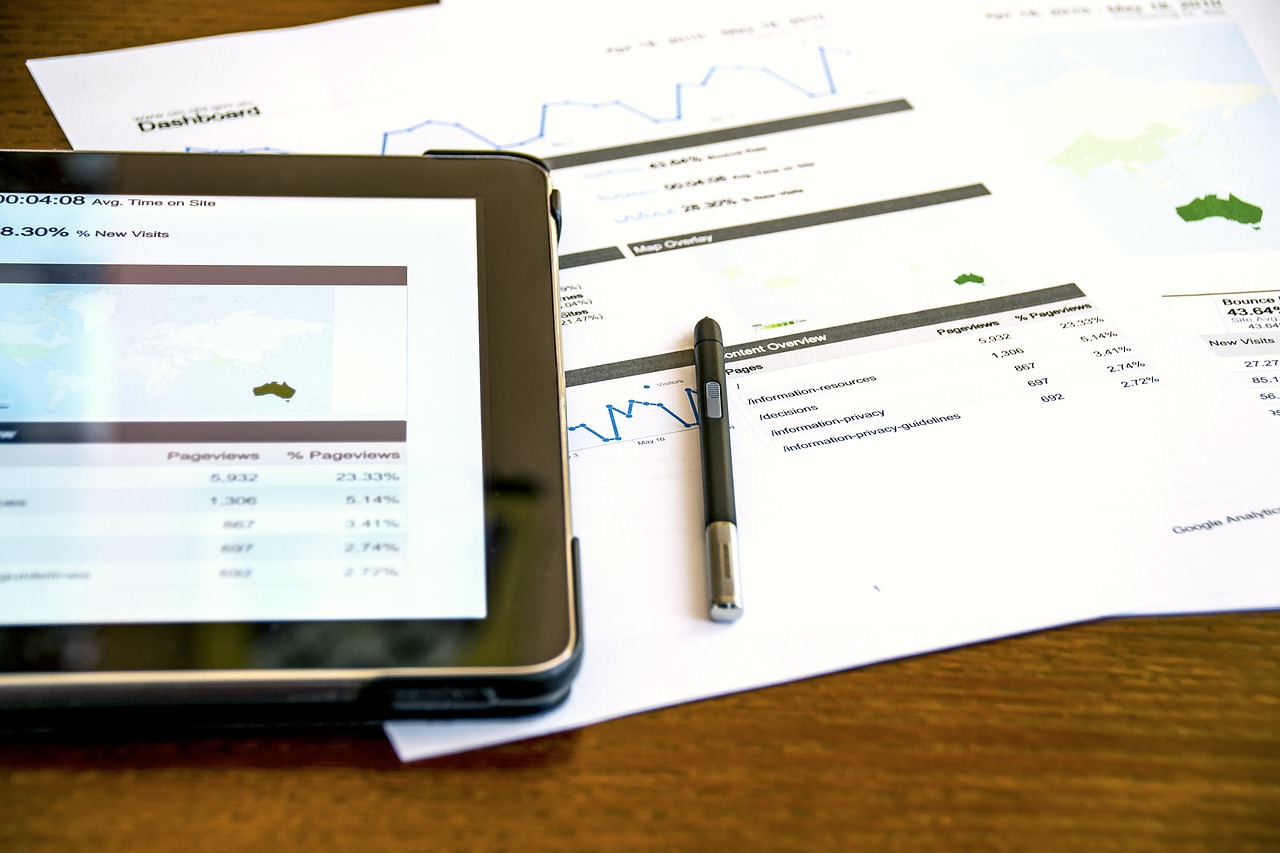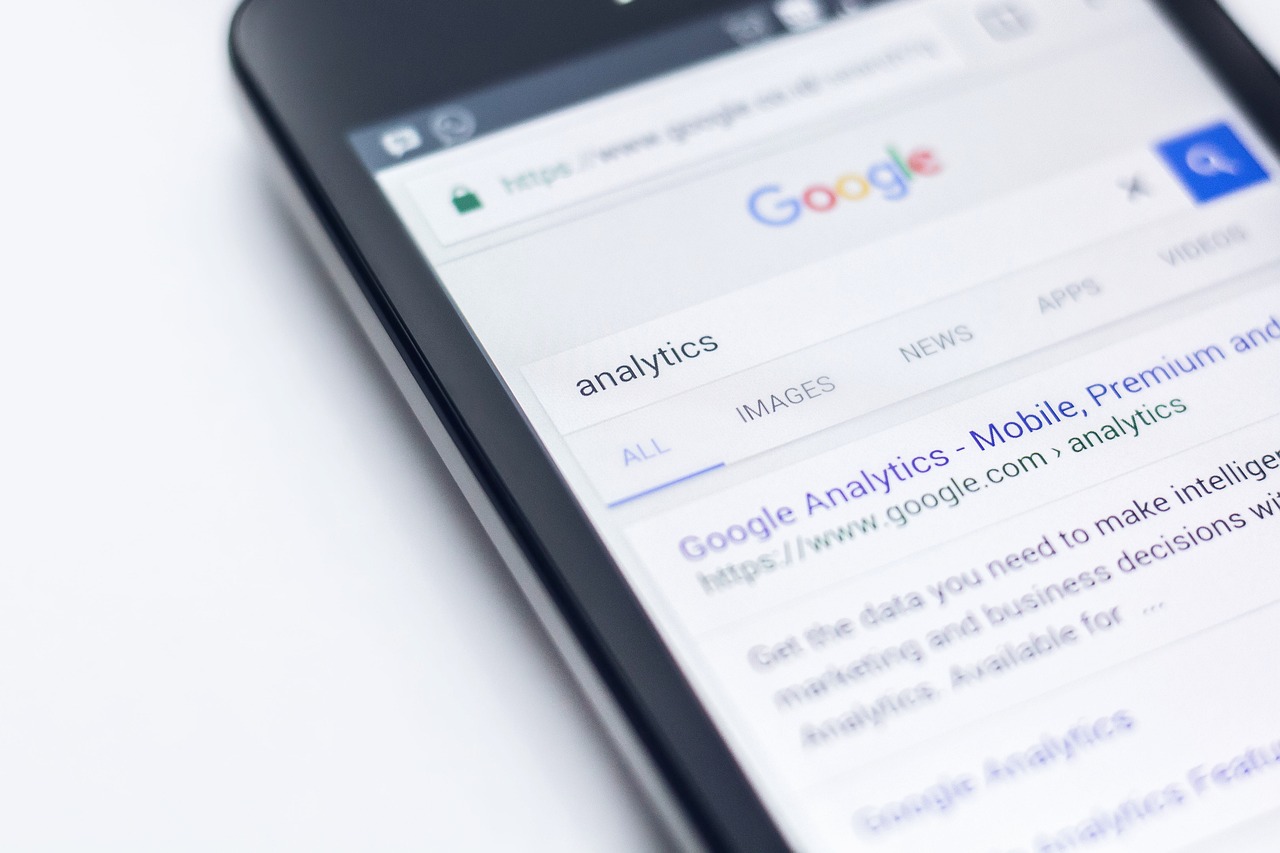The Role of Analytics in Predicting Market Trends
In today's fast-paced business environment, understanding market trends is more critical than ever. Companies are constantly seeking ways to stay ahead of the competition, and this is where analytics comes into play. By harnessing the power of data, businesses can not only make informed decisions but also anticipate future market shifts. Imagine trying to navigate a ship through foggy waters without a compass; that's what operating without analytics feels like. In this article, we'll delve into how analytics serves as a lighthouse for businesses, guiding them through the murky waters of market dynamics.
Analytics involves the systematic collection, analysis, and interpretation of data to uncover patterns and insights that can drive strategic decision-making. It's like having a crystal ball that reveals the hidden currents of consumer behavior and market dynamics. With the right analytics tools, businesses can identify trends that may not be immediately apparent, allowing them to pivot their strategies effectively. For example, a retail company might notice an uptick in online purchases during specific months, prompting them to adjust their inventory and marketing efforts accordingly.
Moreover, the role of analytics extends beyond just understanding past trends; it also plays a vital role in forecasting future market conditions. By analyzing historical data and current market signals, businesses can make educated predictions about where the market is heading. This predictive capability is especially crucial in industries that are highly sensitive to changes, such as fashion, technology, and agriculture. Think of it as being able to see the storm clouds gathering on the horizon, allowing you to prepare your business for the impending weather.
As we explore the various facets of market analytics, we will touch upon the different types of market trends, the essential data sources for analytics, the tools available for making predictions, the challenges faced in this field, and what the future holds for market analytics. So, buckle up as we embark on this analytical journey, uncovering the secrets that data holds for businesses seeking to thrive in an ever-evolving marketplace.
- What is market analytics? Market analytics is the process of collecting and analyzing data to identify trends and insights that inform business decisions.
- How can analytics help predict market trends? By analyzing historical data and current market signals, analytics can provide insights into future consumer behavior and market conditions.
- What types of data are used in market analytics? Common data sources include sales data, social media insights, and market research reports.
- What tools are available for market predictions? Tools like business intelligence software and predictive analytics tools are commonly used to analyze data and forecast trends.
- What challenges does market analytics face? Challenges include data quality issues, integration of data sources, and the need for skilled analysts to interpret complex data sets.

Understanding Market Analytics
Market analytics is like the compass that guides businesses through the turbulent waters of consumer behavior and market dynamics. It involves the collection and analysis of vast amounts of data to uncover trends, patterns, and insights that are crucial for strategic decision-making. Think of it as a treasure map; without it, companies may wander aimlessly, missing out on valuable opportunities that could lead to success. By leveraging analytics, businesses can make informed choices that enhance their competitive edge in an ever-evolving market landscape.
At its core, market analytics encompasses several key components. First, it involves data collection, which can come from various sources such as sales records, social media, and customer feedback. Each of these sources contributes unique insights into consumer preferences and behaviors. For instance, analyzing sales data can reveal which products are hot sellers, while social media insights can provide a glimpse into customer sentiment and emerging trends.
Next, we have data analysis. This is where the magic happens! By applying statistical methods and analytical tools, businesses can turn raw data into actionable insights. For example, a retail company might analyze seasonal sales trends to determine the best time to launch a new product or run a promotional campaign. This not only helps in optimizing inventory but also ensures that marketing efforts are timed perfectly to capture consumer interest.
Moreover, market analytics is not just about looking at the past; it's also about forecasting future trends. By identifying historical patterns, businesses can make educated predictions about what might happen next. This predictive capability is essential for staying ahead of the competition. Imagine knowing exactly when to ramp up production or when to hold back on new product launches—this foresight can be a game-changer.
In today's fast-paced business environment, the importance of market analytics cannot be overstated. Companies that harness the power of analytics are better equipped to adapt to changes in consumer behavior, economic shifts, and technological advancements. They can respond with agility and precision, making them more resilient in the face of challenges.
To sum it up, understanding market analytics is crucial for any business looking to thrive in a competitive landscape. It provides the insights needed to navigate the complexities of the market, allowing companies to make informed decisions that drive growth and success.
- What is market analytics? Market analytics refers to the process of collecting and analyzing data to identify trends and insights that inform business decisions.
- Why is market analytics important? It helps businesses understand consumer behavior, forecast market trends, and make data-driven decisions to stay competitive.
- What types of data are used in market analytics? Common data sources include sales data, social media interactions, customer feedback, and market research reports.
- How can businesses implement market analytics? Businesses can utilize various tools and software solutions, such as business intelligence software and predictive analytics tools, to analyze data effectively.

Types of Market Trends
When it comes to understanding market dynamics, recognizing the different types of market trends is essential. These trends serve as vital signposts, guiding businesses in their strategic decision-making processes. Market trends can be broadly categorized into three main types: seasonal, cyclical, and structural trends. Each of these categories provides unique insights into consumer behavior and overall market conditions, enabling businesses to adapt and thrive.
Seasonal trends are perhaps the most straightforward to identify. They refer to predictable fluctuations in demand or sales that occur at specific times of the year. For instance, think about how retail sales spike during the holiday season. Businesses need to prepare for these seasonal shifts by analyzing past data and anticipating future demands. This is where analytics comes into play, helping companies forecast sales based on historical patterns.
Another significant factor influencing seasonal trends is the impact of holidays. Each year, holidays like Christmas, Thanksgiving, or Valentine's Day create unique spikes in consumer purchasing behavior. For example, during the weeks leading up to Christmas, retailers often see a dramatic increase in sales for gifts, decorations, and festive food items. By leveraging analytics, businesses can not only prepare for these surges but also tailor their marketing strategies to maximize profits during these peak periods.
Moreover, weather influences can also have a substantial impact on market trends. For industries like retail and agriculture, weather conditions can dictate consumer behavior. Imagine a clothing retailer; a sudden drop in temperature can lead to an increase in sales for winter apparel. Similarly, farmers must adapt their strategies based on climatic changes to optimize their yields. By utilizing analytics, businesses can forecast demands based on weather patterns, ensuring they are always one step ahead.
On the other hand, cyclical trends are characterized by patterns that occur over longer periods, often tied to broader economic cycles. These trends can provide invaluable insights into the timing of investments and resource allocation. For example, during economic downturns, consumers tend to cut back on discretionary spending, leading to decreased sales in luxury goods. Conversely, during periods of economic growth, businesses often see a rise in consumer spending. Understanding these cyclical trends allows companies to make informed decisions about when to invest or conserve resources.
Finally, we have structural trends, which are more complex and often involve long-term shifts in consumer behavior or market dynamics. These trends can be influenced by various factors, including technological advancements, demographic changes, and evolving consumer preferences. For instance, the rise of e-commerce has fundamentally changed how consumers shop, leading to a decline in traditional retail sales. By analyzing structural trends, businesses can identify emerging opportunities and adapt their strategies accordingly.
In summary, recognizing and understanding the different types of market trends is crucial for any business looking to stay competitive. Seasonal trends help predict short-term fluctuations, while cyclical trends offer insights into longer-term economic patterns. Structural trends, on the other hand, provide a broader view of how market dynamics are evolving over time. By leveraging analytics, businesses can harness these insights to make informed decisions, optimize their operations, and ultimately drive growth.
- What are the main types of market trends? The main types of market trends include seasonal, cyclical, and structural trends.
- How do seasonal trends impact businesses? Seasonal trends create predictable fluctuations in demand, allowing businesses to prepare and adjust their strategies accordingly.
- Why are cyclical trends important? Cyclical trends help businesses understand the timing of investments and resource allocation based on broader economic cycles.
- What role does analytics play in identifying market trends? Analytics helps businesses collect and analyze data to identify trends, patterns, and insights that drive strategic decision-making.

Seasonal Trends
are fascinating phenomena that every business needs to understand to thrive in today's competitive landscape. They refer to the predictable fluctuations in demand or sales that occur at specific times of the year. These trends can be influenced by various factors, such as holidays, weather changes, and even cultural events. Recognizing these patterns can help businesses tailor their strategies and offerings to align with consumer behavior, ultimately driving sales and enhancing customer satisfaction.
Think of seasonal trends as the rhythm of a dance. Just as dancers anticipate the beat and adjust their movements accordingly, businesses must learn to read the market's tempo. For instance, during the winter months, retailers often see an increase in sales of warm clothing and holiday gifts. Similarly, summer typically brings a surge in demand for outdoor products and vacation-related items. Understanding these cycles allows companies to prepare their inventory and marketing strategies in advance, ensuring they meet customer expectations and maximize profits.
One of the most significant influences on seasonal trends is the impact of holidays. Holidays create distinct spikes in consumer purchasing behavior. For example, during the Christmas season, consumers flock to stores and online platforms to buy gifts, decorations, and festive foods. Businesses that leverage analytics to anticipate these spikes can optimize their inventory and marketing efforts. They might offer special promotions, enhance their online presence, and ensure that their products are readily available when demand peaks.
Another critical factor in seasonal trends is the influence of weather. Weather conditions can dramatically affect consumer behavior, especially in industries like retail and agriculture. For instance, a sudden cold snap might lead to increased sales of winter apparel, while a heatwave could boost demand for air conditioning units or summer clothing. Businesses can harness weather data through analytics to forecast demand accurately and adjust their strategies accordingly. By analyzing historical weather patterns alongside sales data, companies can create more robust models that predict how changes in climate will influence their sales.
To illustrate the impact of seasonal trends, consider the following table that highlights key seasonal products and their peak sales periods:
| Season | Product Category | Peak Sales Month |
|---|---|---|
| Winter | Clothing & Accessories | December |
| Spring | Gardening Supplies | April |
| Summer | Outdoor Furniture | June |
| Fall | Halloween Decorations | October |
In conclusion, understanding seasonal trends is essential for businesses aiming to remain competitive and responsive to market demands. By leveraging analytics to anticipate changes in consumer behavior driven by holidays and weather, companies can make informed decisions that enhance their operational efficiency and profitability. So, as you navigate your business journey, remember to keep an eye on the seasons—they might just hold the key to your next big opportunity!
- What are seasonal trends? Seasonal trends are predictable fluctuations in demand or sales that occur at specific times of the year, influenced by factors like holidays and weather changes.
- How can businesses prepare for seasonal trends? Businesses can prepare by analyzing historical data, forecasting demand, and adjusting inventory and marketing strategies accordingly.
- Why are holidays important for seasonal trends? Holidays create distinct spikes in consumer purchasing behavior, prompting businesses to optimize their offerings and promotions during these times.
- How does weather influence market trends? Weather conditions can significantly impact consumer behavior, affecting demand for various products, particularly in retail and agriculture.

Impact of Holidays
The impact of holidays on consumer purchasing behavior is nothing short of astonishing. As the calendar flips to festive seasons, businesses often witness a remarkable surge in demand for specific products and services. This phenomenon is not merely anecdotal; it is backed by data analytics that reveals interesting patterns. For instance, during the holiday season, many retailers experience a spike in sales, especially for items like electronics, clothing, and gifts. But why does this happen? The answer lies in the psychology of consumers and the cultural significance of holidays.
During holidays, people are often in a celebratory mood, which translates to increased spending. Think about it: when the holiday spirit kicks in, consumers are more willing to splurge on gifts for loved ones, decorations for their homes, and festive meals. This behavior creates a unique opportunity for businesses to capitalize on these trends through targeted marketing strategies. By analyzing past sales data during these peak times, companies can forecast demand more accurately and stock their inventories accordingly.
Moreover, businesses can leverage analytics to understand which products are likely to be in high demand. For example, a retailer might analyze previous years’ sales data to identify trends, such as:
- Increased sales of toys during Christmas
- Higher demand for chocolates and flowers on Valentine's Day
- Surges in travel bookings around Thanksgiving
By recognizing these patterns, companies can tailor their marketing campaigns to align with consumer expectations, ensuring they are not only prepared for the rush but also able to maximize their sales potential. Additionally, analytics can help businesses identify emerging trends, such as new gift ideas or popular holiday-themed products, allowing them to stay ahead of the competition.
However, the impact of holidays is not limited to just increased sales; it also presents challenges. Companies must navigate issues such as supply chain management and inventory control to meet the heightened demand. This is where analytics becomes invaluable. By predicting sales trends, businesses can manage their stock levels effectively, ensuring they have enough products to satisfy consumer needs without overstocking, which can lead to unnecessary costs.
In summary, the holidays significantly influence market trends, and understanding these impacts through analytics is crucial for businesses aiming to thrive during peak seasons. With the right data-driven strategies in place, companies can not only boost their sales but also foster long-term customer loyalty by providing what consumers want, when they want it.
- How can businesses prepare for holiday sales using analytics?
By analyzing past sales data and identifying trends, businesses can forecast demand and adjust their inventory and marketing strategies accordingly. - What types of products see the most sales during holidays?
Typically, electronics, clothing, and gift items see significant increases in sales during holiday seasons. - How does consumer behavior change during holidays?
Consumers tend to spend more during holidays, often purchasing gifts and festive items, influenced by the celebratory mood and cultural significance.

Weather Influences
Weather plays a pivotal role in shaping market trends, often acting as a silent but powerful force behind consumer behavior. Imagine walking into a store during a blistering summer day; what do you think people are likely to buy? Refreshing drinks, ice cream, and summer apparel, right? Conversely, during the chilly winter months, the demand shifts dramatically towards warm clothing, hot beverages, and cozy home goods. This fluctuation in consumer preferences based on weather conditions is where analytics comes into play, helping businesses anticipate and respond to these changes effectively.
By leveraging historical weather data alongside sales figures, businesses can create predictive models that forecast demand for their products. For instance, a retail chain might analyze past sales data during rainy seasons to determine which items sell best—perhaps raincoats and umbrellas. This insight allows them to stock up on these items ahead of time, ensuring they meet consumer demand without missing out on potential sales.
Moreover, weather influences extend beyond just clothing and food. Industries such as agriculture are highly susceptible to climatic changes. Farmers can use weather analytics to predict crop yields and plan their planting schedules accordingly. For example, if a particularly wet season is anticipated, farmers might choose to plant crops that thrive in moist conditions or adjust their irrigation practices to mitigate risks. This kind of proactive approach not only enhances productivity but also minimizes losses.
In addition to direct sales impacts, weather can also affect marketing strategies. For example, a company might run a promotional campaign for air conditioners during a heatwave, capitalizing on the immediate need of consumers. By analyzing weather forecasts and consumer sentiment, businesses can tailor their marketing efforts to align with current conditions, maximizing engagement and sales opportunities.
In summary, weather influences are a crucial element of market analytics. By understanding how different weather patterns affect consumer behavior, businesses can make informed decisions that enhance their competitive edge. As we move forward, the integration of advanced analytics tools will enable companies to harness weather data even more effectively, ensuring they are always one step ahead in meeting consumer needs.
- How does weather impact consumer purchasing behavior? Weather conditions can significantly influence what consumers choose to buy, with different products seeing spikes in demand based on seasonal changes.
- Can businesses predict sales based on weather data? Yes, by analyzing historical sales data alongside weather trends, businesses can forecast demand and adjust their inventory and marketing strategies accordingly.
- What industries are most affected by weather changes? Industries such as retail, agriculture, and tourism are particularly sensitive to weather fluctuations, requiring them to adapt quickly to changing conditions.

Cyclical Trends
Cyclical trends are fascinating patterns that emerge over extended periods, often reflecting the rhythm of economic cycles. Think of them as the heartbeats of the market, pulsing with the rise and fall of economic activity. These trends can last several years and are typically influenced by various factors, including changes in consumer confidence, employment rates, and overall economic health. Understanding these trends is crucial for businesses looking to time their investments and resource allocation effectively.
One of the most compelling aspects of cyclical trends is their predictability. By analyzing historical data, businesses can identify when to expect peaks and troughs in demand. For instance, during economic booms, consumer spending tends to rise, leading to increased demand for goods and services. Conversely, during recessions, spending usually declines, prompting businesses to tighten their belts and adjust their strategies accordingly. This cyclical behavior offers businesses a roadmap for navigating the complex landscape of market dynamics.
For instance, consider the following key factors that typically influence cyclical trends:
- Consumer Confidence: High consumer confidence often leads to increased spending, while low confidence can result in frugality.
- Interest Rates: Lower interest rates can stimulate borrowing and spending, while higher rates may have the opposite effect.
- Employment Levels: Higher employment generally correlates with increased disposable income and consumer spending.
Businesses that can accurately interpret these cyclical patterns are better equipped to make informed decisions about when to launch new products, enter new markets, or scale operations. For example, a retail company might ramp up inventory ahead of a predicted economic upturn, ensuring they're ready to meet increased consumer demand. On the flip side, during downturns, they might focus on cost-cutting measures to maintain profitability.
Moreover, cyclical trends also provide insights into resource allocation. Companies can optimize their workforce, production schedules, and marketing efforts based on anticipated market conditions. This strategic foresight not only helps in maximizing profits but also in minimizing risks associated with economic fluctuations.
In summary, cyclical trends are a vital aspect of market analytics, offering businesses the insights needed to navigate the economic landscape. By understanding these trends, companies can position themselves advantageously, ensuring they are not just surviving but thriving in a competitive environment.
Q: What are cyclical trends?
A: Cyclical trends refer to patterns in market behavior that occur over extended periods, often tied to the fluctuations in the economy, such as periods of growth and recession.
Q: How can businesses benefit from understanding cyclical trends?
A: By analyzing cyclical trends, businesses can make informed decisions regarding product launches, resource allocation, and strategic planning, allowing them to optimize their operations and maximize profits.
Q: What factors influence cyclical trends?
A: Factors such as consumer confidence, interest rates, and employment levels play a significant role in shaping cyclical trends, impacting consumer spending and overall market dynamics.

Data Sources for Analytics
When it comes to market analytics, the foundation of effective insights lies in the quality and variety of data sources utilized. Businesses today have access to a plethora of data streams that can be harnessed to gain a deeper understanding of market dynamics and consumer behavior. These data sources can be broadly categorized into several key types, each offering unique advantages and insights.
One of the primary sources of data is sales data. This data provides a direct glimpse into consumer purchasing habits, revealing what products are selling well and which ones are lagging behind. By analyzing historical sales data, businesses can identify trends, forecast future demand, and make informed decisions about inventory and marketing strategies. For instance, if a certain product sees a spike in sales during a specific season, businesses can prepare by increasing stock levels ahead of time.
Another vital source is social media insights. In today's digital age, social media platforms have become treasure troves of consumer sentiment and trends. By monitoring engagement, comments, and shares, businesses can gauge public opinion about their products or services. This real-time feedback allows companies to adapt their strategies quickly, ensuring they remain relevant and competitive. For example, a sudden surge in positive comments about a new product can prompt a company to ramp up production to meet anticipated demand.
Additionally, market research reports offer comprehensive analyses of various industries, providing businesses with invaluable data on market conditions, competitor analysis, and consumer preferences. These reports often include surveys and studies conducted by reputable organizations, giving companies a broader perspective on the market landscape. By integrating findings from these reports with their own data, businesses can create a more holistic view of their operational environment.
To effectively utilize these data sources, businesses often rely on data integration tools that help consolidate information from multiple streams into a single, coherent dataset. This integration is crucial because it allows for a comprehensive analysis that takes into account various factors influencing market trends. However, it's important to note that not all data is created equal. The quality of data can significantly impact the accuracy of insights derived from it. Therefore, ensuring that the data collected is accurate, relevant, and up-to-date is essential for effective market analytics.
In summary, the various data sources for analytics, including sales data, social media insights, and market research reports, play a pivotal role in understanding market trends. By leveraging these sources effectively, businesses can make informed decisions that drive growth and maintain a competitive edge in a rapidly evolving market.
- What are the main data sources for market analytics? The primary data sources include sales data, social media insights, and market research reports.
- How does sales data impact business decisions? Sales data helps businesses identify trends, forecast future demand, and make informed inventory and marketing decisions.
- Why is social media important for market analytics? Social media provides real-time feedback and insights into consumer sentiment, allowing businesses to adapt their strategies quickly.
- What role do market research reports play? These reports offer comprehensive analyses of market conditions and consumer preferences, helping businesses understand their competitive landscape.

Sales Data
Sales data is like the heartbeat of any business; it tells you exactly how well your products are performing in the market. By analyzing this data, companies can gain invaluable insights into consumer purchasing habits, which can ultimately guide their strategies and decision-making processes. Think of it as having a crystal ball that reveals the past and hints at the future, allowing businesses to pivot and adapt to ever-changing market demands.
When we talk about sales data, we're looking at a variety of metrics, such as total sales volume, revenue trends, and product performance. These metrics are essential for understanding which products are flying off the shelves and which ones might need a little extra marketing love. For example, a business might notice that a particular product sees a spike in sales during the summer months, indicating a seasonal trend that they can capitalize on. By keeping a close eye on these patterns, businesses can adjust their inventory and marketing strategies accordingly.
Moreover, sales data can be segmented in numerous ways, allowing for a more granular analysis. Businesses can break down sales figures by:
- Geographical location: Understanding where the sales are coming from can help tailor marketing efforts to specific regions.
- Customer demographics: Knowing who is buying your products can inform product development and targeted advertising.
- Time periods: Analyzing sales over different time frames can reveal trends and help forecast future demand.
But it doesn't stop there! The integration of sales data with other data sources, such as social media insights and market research, can amplify its effectiveness. For instance, if a business notices a surge in sales for a specific product and simultaneously sees a spike in related social media conversations, it may suggest that their marketing efforts are resonating with consumers. This synergy between data sources can lead to more informed decision-making and ultimately better business outcomes.
In conclusion, sales data is not just numbers on a spreadsheet; it's a powerful tool that can shape the future of a business. By leveraging this data effectively, companies can not only meet consumer demand but also anticipate it, staying one step ahead in the competitive market landscape.
- What is sales data? Sales data refers to the information collected on the sales of products or services, including metrics like revenue, units sold, and customer demographics.
- How can businesses use sales data? Businesses can use sales data to identify trends, optimize inventory, tailor marketing strategies, and forecast future demand.
- Why is it important to analyze sales data? Analyzing sales data helps businesses understand consumer behavior, improve decision-making, and enhance overall operational efficiency.

Social Media Insights
In today's digital age, social media has emerged as a powerful tool for businesses seeking to understand their consumers better. With billions of users sharing their thoughts, preferences, and experiences online, social media platforms provide a treasure trove of data that can be harnessed for market analytics. By analyzing this data, businesses can gain valuable insights into consumer sentiment and emerging trends, allowing them to tailor their strategies accordingly.
For instance, consider how a retail company might track mentions of its products across various social media channels. By employing sentiment analysis, they can gauge whether the public perception of their brand is positive, negative, or neutral. This analysis can help them identify potential issues before they escalate, as well as capitalize on positive feedback to enhance their marketing efforts. Additionally, social media insights can reveal which products are trending among consumers, providing businesses with the ability to adjust their inventory and marketing strategies in real-time.
Moreover, social media analytics can be segmented into various categories, each offering unique insights. For example:
- Engagement Metrics: These include likes, shares, comments, and overall interactions with posts. High engagement levels often indicate strong consumer interest.
- Demographic Data: Understanding who is talking about your brand—age, gender, location—can help tailor marketing efforts to specific target audiences.
- Trend Analysis: Monitoring hashtags and trending topics can provide insights into current consumer interests and preferences.
By leveraging these insights, businesses can not only improve their product offerings but also enhance their overall customer experience. For instance, if a particular product is receiving a lot of positive feedback on social media, a company might decide to promote it more heavily or even create complementary products based on consumer interest. This kind of agility is essential in a market that is constantly evolving.
However, harnessing social media insights isn't without its challenges. Companies must navigate the vast amounts of data available, ensuring they focus on the most relevant information. Additionally, interpreting this data requires a skilled team that understands both the nuances of social media and the broader market context. As businesses continue to invest in social media analytics, the potential for gaining a competitive edge becomes increasingly clear.
Q: How can social media insights benefit my business?
A: Social media insights can help you understand consumer preferences, improve customer engagement, and tailor your marketing strategies based on real-time feedback.
Q: What tools can I use to analyze social media data?
A: There are numerous tools available, such as Hootsuite, Sprout Social, and Google Analytics, which can help you track engagement and sentiment across various platforms.
Q: Is it necessary to have a dedicated team for social media analytics?
A: While it’s not mandatory, having a dedicated team can significantly enhance your ability to interpret data and implement effective strategies based on insights gained.

Tools for Market Predictions
In today's fast-paced business environment, having the right tools for market predictions is not just a luxury; it's a necessity. With the vast amount of data available, businesses must leverage advanced technologies to sift through this information and extract valuable insights. This is where various tools come into play, each designed to enhance the accuracy of market forecasts and improve strategic planning.
One of the most prominent categories of tools is Business Intelligence (BI) Software. These platforms aggregate data from multiple sources, allowing businesses to visualize their data through comprehensive dashboards. Imagine having all your sales figures, customer feedback, and market research neatly organized in one place. This not only simplifies the decision-making process but also helps in identifying trends that might otherwise go unnoticed. Popular BI tools like Tableau, Microsoft Power BI, and Looker provide interactive reporting features that make data analysis intuitive and accessible.
Another critical tool in the arsenal of market predictions is Predictive Analytics Tools. These tools utilize sophisticated statistical algorithms and machine learning techniques to forecast future trends based on historical data. By analyzing past consumer behavior, these tools can predict future purchasing patterns, enabling businesses to tailor their strategies accordingly. For instance, a retail company might use predictive analytics to determine which products are likely to be in high demand during the upcoming holiday season, allowing them to stock up in advance.
To illustrate the impact of these tools, consider the following table that compares the features of popular BI software and predictive analytics tools:
| Tool Type | Key Features | Benefits |
|---|---|---|
| Business Intelligence Software |
|
|
| Predictive Analytics Tools |
|
|
While these tools are incredibly powerful, they also come with their challenges. For instance, the integration of different data sources can be complex and may require specialized knowledge. Additionally, the effectiveness of these tools heavily relies on the quality of the data fed into them. Therefore, businesses must ensure that they have reliable data management practices in place.
As we look to the future, the evolution of these tools will likely continue. With advancements in artificial intelligence and machine learning, market predictions will become even more precise, allowing businesses to stay ahead of the curve. Real-time analytics will empower companies to respond to market changes instantaneously, ensuring they remain competitive in an ever-evolving landscape.
Q: What is the primary purpose of market prediction tools?
A: The primary purpose of market prediction tools is to analyze data and forecast future market trends, helping businesses make informed decisions and strategize effectively.
Q: How do predictive analytics tools differ from traditional analytics?
A: Predictive analytics tools use historical data and statistical algorithms to forecast future outcomes, while traditional analytics primarily focuses on analyzing past data without predictive capabilities.
Q: Are there any free tools available for market predictions?
A: Yes, several free tools and platforms offer basic analytics capabilities, such as Google Analytics for web traffic analysis and various open-source BI tools.
Q: How important is data quality in market analytics?
A: Data quality is crucial in market analytics; inaccurate or incomplete data can lead to misguided conclusions and flawed predictions, impacting business strategies.

Business Intelligence Software
In the fast-paced world of business, making informed decisions quickly can mean the difference between success and failure. This is where Business Intelligence (BI) software comes into play. These powerful tools aggregate data from various sources, transforming raw information into actionable insights. Imagine having a crystal ball that not only shows you what's happening in your business but also helps you predict what will happen next. That's the magic of BI software!
At its core, BI software enables organizations to analyze their data comprehensively. It collects data from sales, marketing, finance, and even social media, allowing businesses to see the bigger picture. This holistic view helps decision-makers identify trends, track performance, and understand customer behavior. For instance, if a retail company notices a sudden spike in sales of a particular product, BI software can help them analyze the underlying causes—whether it's a marketing campaign, seasonal demand, or changing consumer preferences.
Moreover, BI tools come equipped with interactive dashboards that visualize data in a user-friendly manner. These dashboards can display key performance indicators (KPIs), sales trends, and customer demographics, making it easier for stakeholders to grasp complex information at a glance. Here’s a simple representation of what a BI dashboard might include:
| Metric | Current Value | Previous Value | Trend |
|---|---|---|---|
| Monthly Sales | $150,000 | $120,000 | ↑ |
| Customer Satisfaction | 85% | 80% | ↑ |
| Website Traffic | 50,000 visits | 45,000 visits | ↑ |
Furthermore, BI software can also facilitate collaboration among teams. With shared access to insights and reports, different departments can work together more effectively. For example, the marketing team can align their strategies with sales data, ensuring that campaigns are targeted and relevant. This synergy can lead to more efficient resource allocation and ultimately, higher profitability.
However, it's essential to choose the right BI tool that fits your organization's needs. Factors to consider include the software's scalability, user-friendliness, and integration capabilities with existing systems. A well-chosen BI solution not only enhances data analysis but also empowers teams to act on insights quickly, keeping businesses agile and competitive in a constantly evolving market landscape.
- What is Business Intelligence software? BI software is a technology that helps organizations collect, analyze, and visualize data to make informed business decisions.
- How can BI software benefit my business? It can provide insights into trends, improve decision-making, enhance collaboration among teams, and ultimately drive profitability.
- Is BI software suitable for small businesses? Yes, many BI solutions are scalable and can be tailored to fit the needs of small businesses, making data-driven decision-making accessible for all.

Predictive Analytics Tools
In today’s fast-paced business world, are becoming essential for organizations that want to stay ahead of the competition. These tools leverage statistical algorithms and machine learning techniques to analyze historical data and forecast future trends. By employing these advanced technologies, businesses can make informed decisions that enhance their strategic planning and operational efficiency.
One of the most significant advantages of predictive analytics tools is their ability to transform vast amounts of data into actionable insights. Imagine having a crystal ball that doesn’t just show you what’s happening now but also helps you anticipate what’s coming next. This is precisely what these tools offer. They sift through historical data, identify patterns, and use these patterns to predict future outcomes. For instance, a retailer might analyze past sales data to forecast demand for specific products during the upcoming holiday season.
There are various predictive analytics tools available in the market, each with its unique features and capabilities. Here are some popular options:
- IBM SPSS: This tool is widely used for statistical analysis and predictive modeling. It enables businesses to create detailed reports that visualize data trends.
- Microsoft Azure Machine Learning: A cloud-based service that allows users to build, train, and deploy machine learning models quickly and efficiently.
- RapidMiner: Known for its user-friendly interface, this tool provides a platform for data preparation, machine learning, and predictive analytics.
- SAS Advanced Analytics: This comprehensive suite offers a range of tools for data mining, forecasting, and optimization, making it suitable for complex analytical tasks.
Moreover, the integration of these tools into a business's existing systems can significantly enhance data-driven decision-making. For example, by integrating predictive analytics with customer relationship management (CRM) systems, companies can better understand customer behavior and tailor their marketing efforts accordingly. This not only improves customer satisfaction but also drives sales and profitability.
However, it’s essential to note that while predictive analytics tools are powerful, they are not foolproof. The accuracy of predictions heavily relies on the quality of the data fed into these systems. Inaccurate or incomplete data can lead to flawed predictions, which can have serious repercussions for businesses. Therefore, organizations must invest in data governance and quality assurance processes to ensure that the insights derived from predictive analytics are reliable and actionable.
In conclusion, predictive analytics tools are revolutionizing how businesses approach market forecasting and strategic planning. By harnessing the power of data, these tools not only help in predicting future trends but also enable organizations to respond proactively to market changes. As technology continues to evolve, the capabilities of predictive analytics will only expand, offering even more sophisticated solutions for businesses looking to thrive in a competitive landscape.
- What is predictive analytics? Predictive analytics involves using statistical techniques and machine learning to analyze historical data and forecast future outcomes.
- How can businesses benefit from predictive analytics tools? These tools help businesses make informed decisions, optimize operations, and improve customer experiences by anticipating market trends.
- What types of data are used in predictive analytics? Predictive analytics can utilize various data types, including sales data, customer behavior data, and market research findings.
- Are predictive analytics tools suitable for all businesses? While beneficial, the effectiveness of predictive analytics tools can vary based on the specific needs and data maturity of a business.

Challenges in Market Analytics
Despite the numerous advantages that market analytics offers, businesses often face a variety of challenges that can hinder their ability to effectively analyze data and make informed decisions. One of the primary issues is data quality. Inaccurate or incomplete data can lead to misguided conclusions, which can be detrimental to strategic planning. Imagine navigating a ship with faulty maps; you might end up in the wrong harbor, or worse, lost at sea. Similarly, poor data quality can steer businesses in the wrong direction, resulting in missed opportunities or wasted resources.
Another significant challenge is the integration of data sources. In today's digital landscape, data comes from various platforms—sales transactions, social media interactions, customer feedback, and more. Integrating this data into a coherent system can be complex and time-consuming. Businesses need sophisticated systems that can pull together disparate data points to create a unified view of market trends. Without this integration, companies may find themselves with fragmented insights that fail to provide a comprehensive understanding of their market environment.
Furthermore, the demand for skilled analysts is another hurdle that organizations must overcome. Analyzing complex data sets requires a certain level of expertise. Without skilled professionals who can interpret the data accurately, companies risk making decisions based on misinterpretations. It's like having a high-tech telescope but lacking the astronomer to interpret the stars; the potential is there, but without the right guidance, you might miss the wonders of the universe.
To illustrate these challenges, consider the following table that outlines some common issues faced in market analytics:
| Challenge | Description |
|---|---|
| Data Quality | Inaccurate or incomplete data can lead to poor decision-making. |
| Data Integration | Difficulty in combining data from various sources into a single view. |
| Skilled Analysts | Need for professionals who can interpret complex data accurately. |
In addition to these challenges, businesses must also deal with the evolving nature of technology and market conditions. As new tools and platforms emerge, keeping up with the latest trends and ensuring that analytics practices remain relevant can be daunting. Companies that fail to adapt may find themselves falling behind their competitors who are leveraging the latest advancements in analytics.
Ultimately, while the challenges in market analytics are significant, they are not insurmountable. With the right strategies, tools, and talent, businesses can navigate these obstacles and harness the power of analytics to gain a competitive edge. It’s about turning these challenges into opportunities for growth and innovation.
- What is the most significant challenge in market analytics? Data quality is often cited as the most significant challenge, as inaccuracies can lead to poor decision-making.
- How can businesses improve data integration? Implementing advanced data management systems and utilizing data warehousing solutions can help streamline the integration process.
- Why is skilled analysis important? Skilled analysts can interpret complex data sets effectively, providing insights that drive strategic decisions.

Data Quality Issues
When it comes to market analytics, the phrase "garbage in, garbage out" rings particularly true. The quality of data plays a pivotal role in the accuracy and reliability of market predictions. If businesses rely on inaccurate or incomplete data, they risk making misguided decisions that can have serious repercussions. Imagine trying to navigate a ship using a faulty compass; you're bound to end up lost at sea. In the same way, poor data quality can lead businesses astray, causing them to misinterpret market trends and consumer behavior.
There are several factors that contribute to data quality issues. One major concern is data accuracy. This refers to how closely data reflects the real-world scenario it represents. For instance, if a retail company relies on outdated sales figures, it may misjudge the demand for certain products. Similarly, data completeness is another critical aspect. Missing information can create gaps in analysis, leading to incomplete insights. Without a full picture, businesses may overlook important trends or opportunities.
Another significant issue is data consistency. When data is collected from multiple sources, discrepancies can arise. For example, if one department records customer interactions differently than another, it can create confusion and conflict in data analysis. Businesses must ensure that all data sources adhere to the same standards and definitions to maintain a coherent dataset.
To combat these challenges, companies should implement robust data governance frameworks that focus on the following key areas:
- Regular Data Audits: Periodically reviewing data for accuracy and completeness can help identify issues before they lead to poor decision-making.
- Standardization Processes: Establishing clear guidelines for data entry and management across departments ensures consistency.
- Training and Development: Investing in training for staff on data management best practices can significantly enhance overall data quality.
In conclusion, addressing data quality issues is not just a technical necessity; it's a strategic imperative. By prioritizing data integrity, businesses can improve their market analytics, leading to better insights and ultimately more informed decision-making. The bottom line? High-quality data is the bedrock of successful market predictions, and without it, businesses risk sailing into uncharted waters.
- What is data quality in market analytics? Data quality refers to the accuracy, completeness, consistency, and reliability of the data used in market analytics.
- How can businesses improve data quality? Businesses can improve data quality through regular audits, standardization processes, and staff training on data management.
- Why is data quality important for market predictions? High-quality data is crucial for making accurate market predictions; poor data can lead to misguided decisions and lost opportunities.

Integration of Data Sources
Integrating data from various sources is a fundamental challenge in the realm of market analytics. In today’s data-driven world, businesses often find themselves inundated with information coming from multiple channels. These sources can include sales data, social media interactions, customer feedback, and even market research reports. The real trick lies in weaving these disparate threads into a coherent narrative that informs strategic decision-making.
Imagine trying to solve a jigsaw puzzle with pieces from different sets. Each piece represents a unique data source, and while they may all contribute to the bigger picture, they often don’t fit together seamlessly. This is where the importance of integration comes into play. Without a robust integration strategy, companies risk operating in silos, leading to insights that are incomplete or, worse, misleading.
To effectively integrate data sources, businesses typically employ several strategies, including:
- Data Warehousing: This involves consolidating data from various sources into a central repository, making it easier to access and analyze.
- ETL Processes: Extract, Transform, Load (ETL) processes help in cleaning and preparing data for analysis, ensuring that it is accurate and usable.
- API Integration: Utilizing Application Programming Interfaces (APIs) allows for real-time data sharing between different systems, enhancing the flow of information.
However, the journey to seamless integration is not without its hurdles. Companies often face issues such as data quality, where inconsistencies in data formats and standards can create chaos. Additionally, the sheer volume of data can overwhelm existing systems, leading to bottlenecks in processing and analysis. Therefore, investing in the right technology and skilled personnel is crucial to overcoming these challenges.
As businesses continue to embrace a more data-centric approach, the integration of data sources will become increasingly sophisticated. Technologies such as cloud computing and machine learning are paving the way for more efficient data integration processes, allowing organizations to pull insights from vast amounts of data quickly and accurately. This evolution not only enhances decision-making but also positions companies to be more agile and responsive to market changes.
Q: Why is data integration important for market analytics?
A: Data integration is crucial because it allows businesses to create a unified view of their data, leading to more accurate insights and better decision-making.
Q: What are common challenges in data integration?
A: Common challenges include data quality issues, varying data formats, and the complexity of merging data from different sources.
Q: How can businesses ensure successful data integration?
A: Businesses can ensure successful data integration by investing in robust data management tools, employing skilled analysts, and establishing clear data governance policies.

Future of Market Analytics
The is not just bright; it's practically glowing with potential! As we leap further into the digital age, the tools and technologies available for analyzing market trends are evolving at a breakneck speed. Imagine a world where businesses can predict consumer behavior with pinpoint accuracy, allowing them to tailor their products and services to meet ever-changing demands. This isn’t just a dream; it's becoming a reality thanks to advancements in artificial intelligence and machine learning.
These cutting-edge technologies are revolutionizing how data is processed and analyzed. For instance, AI algorithms can sift through massive datasets to uncover patterns that would take humans ages to identify. This means businesses can make informed decisions faster, staying one step ahead of the competition. With machine learning, systems can continuously improve their predictions based on new data, creating a self-updating cycle of insight and action. It’s like having a crystal ball that gets smarter the more you use it!
Another exciting development in the future of market analytics is the rise of real-time analytics. In a world where consumer preferences can change in the blink of an eye, the ability to analyze data as it comes in is invaluable. Businesses can now respond to market changes instantaneously, adjusting their strategies on the fly. This agility can be the difference between capitalizing on a trend and being left in the dust.
Consider the following key aspects that will shape the future of market analytics:
- Enhanced Data Integration: Future analytics tools will seamlessly integrate data from various sources, including IoT devices, social media, and customer feedback, creating a comprehensive view of market dynamics.
- Increased Personalization: With deeper insights into consumer behavior, businesses will be able to offer more personalized experiences, enhancing customer satisfaction and loyalty.
- Predictive and Prescriptive Analytics: Moving beyond mere predictions, future analytics will offer recommendations on the best courses of action based on data analysis.
As we look ahead, it's clear that the landscape of market analytics will be dominated by those who can harness these technologies effectively. Companies that invest in advanced analytics capabilities will not only survive but thrive in this fast-paced environment. They will be able to anticipate market shifts and make data-driven decisions that propel them forward.
In conclusion, the future of market analytics is a thrilling frontier filled with opportunities for businesses willing to embrace innovation. As artificial intelligence and real-time data analytics become more prevalent, we can expect a fundamental shift in how companies understand and respond to market trends. It’s a brave new world out there—are you ready to dive in?
- What is market analytics? Market analytics is the process of collecting and analyzing data to identify trends and insights that inform business decisions.
- How does AI impact market analytics? AI enhances market analytics by providing advanced data processing capabilities, uncovering patterns, and improving predictive accuracy.
- What are real-time analytics? Real-time analytics refers to the immediate processing and analysis of data as it is generated, allowing businesses to react quickly to market changes.
- Why is data integration important in market analytics? Data integration ensures that businesses have a comprehensive view of their market environment, leading to more informed decision-making.

AI and Machine Learning
Artificial Intelligence (AI) and Machine Learning (ML) are transforming the landscape of market analytics, allowing businesses to not only predict trends but also to understand the intricate patterns behind consumer behavior. Imagine having a crystal ball that not only tells you what will happen next in the market but also explains why it will happen. This is precisely what AI and ML are offering. By analyzing vast amounts of data at lightning speed, these technologies uncover insights that would take humans ages to detect.
One of the most exciting aspects of AI and ML in market analytics is their ability to learn from data continuously. As they process more information, these systems become smarter, refining their predictions and improving their accuracy over time. For instance, a retail company can utilize machine learning algorithms to analyze past sales data, seasonal trends, and even social media sentiment to forecast which products will be in demand during the upcoming holiday season.
Consider the following benefits of integrating AI and ML into market analytics:
- Enhanced Predictive Accuracy: AI algorithms can identify complex patterns that human analysts might overlook, resulting in more precise forecasts.
- Automated Insights: Businesses can automate the generation of insights, freeing up valuable time for analysts to focus on strategic decision-making.
- Real-Time Adaptability: With real-time data processing, companies can adjust their strategies on-the-fly, responding to market changes as they happen.
Moreover, AI-driven analytics can segment customers based on behavior and preferences, allowing businesses to tailor their marketing strategies effectively. For example, a company could use machine learning to analyze purchase history and identify distinct customer groups, enabling personalized marketing campaigns that resonate more with specific audiences.
As we look to the future, the integration of AI and ML into market analytics is expected to deepen. Businesses not only gain a competitive edge through better predictions but also cultivate a more profound understanding of their customers. This evolution is akin to moving from a black-and-white world to a vibrant, full-color landscape where every detail matters and every decision is informed by data.
Q1: How does AI improve market trend predictions?
AI enhances market trend predictions by analyzing large datasets to identify patterns and insights that human analysts may miss. Its ability to learn from data over time means that predictions become increasingly accurate.
Q2: What are the challenges of implementing AI in market analytics?
Challenges include data quality issues, the need for skilled personnel to interpret complex data, and the integration of AI systems with existing data infrastructure.
Q3: Can small businesses benefit from AI and machine learning?
Absolutely! Small businesses can leverage AI and ML tools to gain insights from their data, optimize marketing strategies, and make informed decisions without needing extensive resources.

Real-Time Analytics
In today's fast-paced business environment, has emerged as a game changer for organizations looking to stay ahead of the competition. Imagine being able to make decisions based on data that is constantly updated, reflecting the most current market conditions. This capability not only enhances a company's agility but also allows businesses to seize opportunities as they arise, rather than reacting to past trends.
Real-time analytics involves the continuous collection and analysis of data, enabling businesses to monitor their performance and market dynamics instantaneously. For instance, retailers can track inventory levels and sales patterns in real-time, allowing them to adjust their stock and marketing strategies on the fly. This is particularly important during peak shopping seasons, where consumer behavior can shift dramatically from one hour to the next.
Moreover, real-time analytics can significantly improve customer engagement. Companies can leverage data from social media platforms, website interactions, and customer feedback to tailor their offerings and marketing efforts. By analyzing this data in real-time, businesses can quickly identify trends in consumer sentiment and adapt their strategies accordingly. For example, if a new product launch is receiving negative feedback, a company can respond immediately by addressing customer concerns or adjusting their marketing message.
To illustrate the impact of real-time analytics, consider the following table that outlines key benefits:
| Benefit | Description |
|---|---|
| Enhanced Decision-Making | Access to up-to-date data allows for informed decisions based on current market conditions. |
| Increased Agility | Businesses can quickly pivot their strategies in response to real-time data insights. |
| Improved Customer Satisfaction | Immediate adjustments to offerings based on customer feedback enhance the overall experience. |
| Competitive Advantage | Organizations that utilize real-time analytics can outperform competitors who rely on historical data. |
However, implementing real-time analytics is not without its challenges. Organizations must invest in the right technology and infrastructure to handle the continuous flow of data. Additionally, there is a need for skilled personnel who can interpret the data and derive actionable insights. Without these components in place, businesses may struggle to fully leverage the potential of real-time analytics.
In conclusion, real-time analytics is transforming the way businesses operate. By enabling organizations to make swift, data-driven decisions, it enhances their ability to respond to market changes, ultimately leading to improved performance and customer satisfaction. In a world where time is of the essence, the ability to analyze data in real-time is not just an advantage; it's a necessity for survival.
- What is real-time analytics? Real-time analytics refers to the process of continuously collecting and analyzing data to provide immediate insights for decision-making.
- How does real-time analytics benefit businesses? It enhances decision-making, increases agility, improves customer satisfaction, and provides a competitive advantage.
- What challenges are associated with implementing real-time analytics? Challenges include the need for appropriate technology, infrastructure, and skilled personnel to interpret the data effectively.
Frequently Asked Questions
- What is market analytics?
Market analytics is the process of collecting and analyzing data to uncover trends, patterns, and insights that can aid businesses in making informed strategic decisions. It helps organizations understand consumer behavior and market dynamics, thus staying competitive.
- What are the different types of market trends?
Market trends can be categorized into several types, including seasonal trends, cyclical trends, and structural trends. Each type provides unique insights into consumer behavior and market changes, helping businesses adapt their strategies accordingly.
- How do seasonal trends affect businesses?
Seasonal trends are predictable fluctuations in demand that occur at specific times of the year, influenced by factors like holidays and weather. Businesses must analyze these trends to anticipate spikes in demand and adjust their inventory and marketing strategies accordingly.
- What data sources are essential for market analytics?
Key data sources for market analytics include sales data, social media insights, and market research reports. These sources provide valuable information about consumer purchasing habits, sentiment, and overall market conditions, helping businesses derive actionable insights.
- What tools can assist in market predictions?
There are various tools available for market predictions, such as business intelligence software and predictive analytics tools. These tools help aggregate and analyze data, providing businesses with comprehensive insights and forecasts based on historical performance.
- What challenges do businesses face in market analytics?
Businesses often encounter challenges like data quality issues, integration of multiple data sources, and the need for skilled analysts. Poor data quality can lead to inaccurate conclusions, while integrating diverse data can be complex and require sophisticated systems.
- How is AI changing market analytics?
AI and machine learning are revolutionizing market analytics by enhancing the accuracy of predictions and automating decision-making processes. These technologies allow businesses to uncover deeper insights and respond to market changes more effectively.
- What is the future of market analytics?
The future of market analytics looks bright, with advancements in AI and real-time analytics set to improve how businesses predict and respond to market trends. This will enhance agility and competitiveness in an ever-evolving market landscape.



















